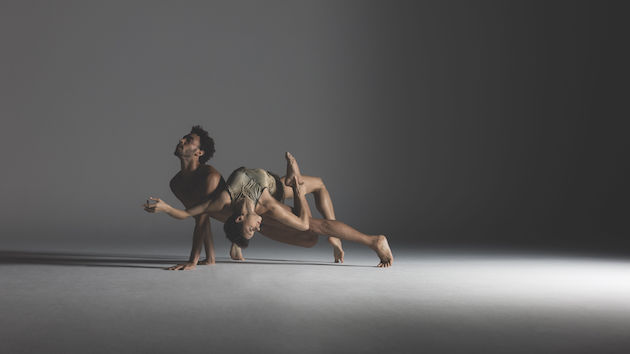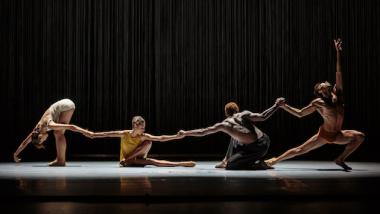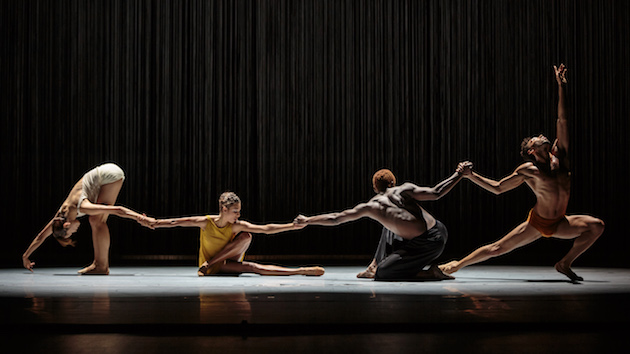
The main reason that people collaborate — and dissect, analyze, criticize, praise, and codify its wily ways — is the activity’s impossible-to-predict results.
No matter how adept the wordsmith or how insightful the philosopher or how tactile and targeted the touch of a finger pointed at collaboration’s taproot, words and thoughts and gestures fail to pin down its origins or its endpoint. Often, its practitioners cannot forecast whether or not the net outcome will be gloomy or glorious.
This is collaboration’s allure, because out of “nowhere” comes incomparable music, dance, theater, visual art, films, technology, scientific discovery, societal change, and a host of other things that could not or would not have existed, had two or more forces not combined their energies to produce them. When it works, it’s the equivalent of real-life magic.
The main reason that Israeli mezzo-soprano Maya Lahyani and LINES Ballet artistic director and choreographer Alonzo King collaborate is that they are artistic soul mates. In separate interviews, each artist describes the other person as “honest” and “penetrating.” They speak of trust, comfort, and inevitably, a fascination with collaboration’s unpredictable results.
Together, they are embarking on their third joint adventure, following Lahyani’s sharing the stage with LINES in Wheel in the Middle of a Field in 2010 and again in Constellation in 2012. Art Song is the working title of an upcoming world premiere ballet choreographed by King and featuring Lahyani performing live onstage. The Nov. 2–6 performances welcome former LINES company member Meredith Webster in the new work and reprise King’s Meyer, a work from 2013 that was a collaboration with Grammy Award-winning composer and bassist Edgar Meyer.
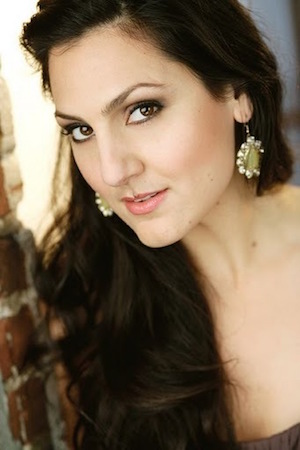
The new 25-minute ballet has Lahyani performing four vocal works: Erbarme dich (Bach); Dove sei, amato bene (Handel); Stille Tränen (Schumann); and Dido’s Lament (Purcell). In addition to her appearances with LINES, Lahyani is well-known to Bay Area audiences due to her performances while an Adler Fellow with San Francisco Opera. She made her main-stage debut with the company in 2010 as Wowkle in La fanciulla del West. Since that time, she has joined a number of opera companies, including over 50 performances with Metropolitan Opera during the 2013-14 season. Showcasing what may become a signature role for a singer whose voice is often described in reviews as “supple,” “well-rounded,” and “dark,” Lahyani during the summer this year triumphed in performances with Opera Las Vegas and PORTopera in the title role of Carmen.
“Carmen is a strong woman, one of the first feminists in literature,” says Lahyani. “I get to dig in.” The opportunity for a mezzo-soprano to take on a leading character “with meat,” she says is rare and Carmen has taught her about her vocal and expressive range. “Carmen’s singing in different qualities: flirtatious, determined, anger, pain, and in the fourth act, she sings her destiny. Finding those colors and expressions vocally is highly challenging.”
Lahyani is in perpetual student mode, loving rehearsal and absorbing insight and maturity from roles like Charlotte in Werther, an experience that taught her how to approach a role that she loved with restraint. “We must learn where to separate ourselves and where to dive in. Staying out of indulgent spaces, as a young singer, it was a huge lesson.”
Behind the scenes, she says that performing with “the giants of opera” that she admires during her two years as an Adler Fellow was “a class you can’t find in a classroom.” A later experience, watching Finnish soprano Karita Mattila in The Makropulos Case, was like opening a liberating textbook. “I’d take a chair and sit in the wings to watch her finish the end of the act. It was so mind-blowing. Every night, it was different. She took new risks. She had the guts to push the envelope.”
Stage fear, Layhani has also discovered, is not restricted to novice or young performers. “Nobody is immune from the butterfly of stage fear. Placido Domingo came to sing a role he hadn’t performed in a long time while I was a fellow. He’s had a career of 40 years and he was still nervous.”
Perhaps a feeling of terror is key to collaboration? Lahyani says the first time King asked her to “write” her name using only her body it was “insane for me to do.” When he subsequently put her onstage with the dancers in Wheel, she was horrified. “It took courage. Little by little, I let go. I had to trust his words telling me that if I was really true to the moment, it could not be wrong.”
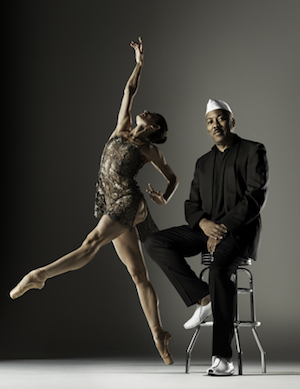
King, who is notorious for creating right up to curtain time and who chooses to define his choreographic role as a “sculpting while following form,” says he hasn’t decided if Lahyani will dance or simply sing. Regardless, Lahyani’s sincerity onstage is moving. “All the calculations and power of intellect in an artist is a wonderful thing, but it has a ceiling,” King says. “The heart does not have a ceiling and her singing is from the heart.” A human singing voice, he adds, may have three ranges, but because a voice can erase weariness, heal injury, and raise consciousness, it makes a statement beyond audible sound.
King and Lahyani selected the music — you guessed it --- collaboratively. King hears melancholy but also hope in the four songs’ balancing act between lament and aspiration. The yearning that he hears in the music or the lyrics is a release; of what, he’s not yet sure. Aligning the work’s architecture, he’s wary of the choreography being a literal restatement of the music. Instead, he’s seeking nests in which to cuddle, islands on which to stand alone, and seed sounds that will lead him to merge the subject, whatever it will be, and the “objects” — Layhani, the dancers, sets, costumes, lighting — into one truth.
Filmmakers of late have been touting animation as one of the most collaborative art forms, but anyone attending a live performance is a participant in an incredible display of “barn-raising” community action. King enjoys especially how a dance is kept taut when an accompanist or musician sets a fast tempo and “the dancers have to really haul.” Not only is that a collaboration-in-action but, unlike a screened film, which doesn’t respond to the audience, live performers are always adjusting to and influenced by the energy of the observers.
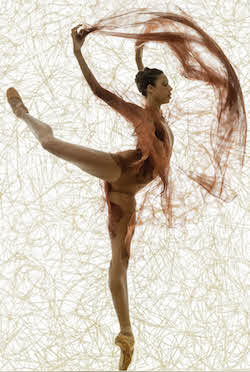
Lahyani, by the time audiences are watching, will have pondered and practiced the songs enough to achieve what she always strives for in performance: to move beyond technical filters and worrying about beautiful high notes to become a performer who leaves everything onstage. “I call it being a suicidal performer,” she says. “Doing what I want to do vocally, but being free in the character.” Each piece presents a unique challenge: The Bach must not be over sung; Handel is not about the words; in the Schumann, the gentler moments must be subtle and lure the audience to peek in at her soul (“Big gestures come more easily to me,” she confides); and the Purcell, sung in English, must project feelings that transcend the words.
Lest anyone conclude from their backgrounds in the arts that the collaboration has likely origins in that realm, a most unusual partner played a role in their work together: the Israeli Army. While learning to use an Uzi submachine gun and an M-16 rifle during the obligatory two years every female Israeli citizen must serve in the military, Lahyani was a member of the armed forces’ culture unit. It was on a tour to perform at a gala in New York City that the then-18-year-old singer fell in love with the United States. Approximately 18 months later, she returned to earn her Bachelor and Master’s Degrees in Music from the Mannes School of Music in New York. Eventually, in San Francisco, King’s path and Lahyani’s studies brought their work to close proximity. The rest of the collaboration, one could say, was magic.
